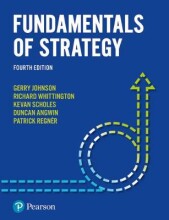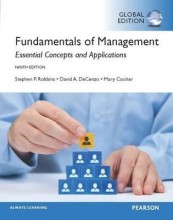Summary: H20 - Het Respiratoire Systeem
- This + 400k other summaries
- A unique study and practice tool
- Never study anything twice again
- Get the grades you hope for
- 100% sure, 100% understanding
Read the summary and the most important questions on H20 - Het respiratoire systeem
-
1 Pulmonary ventilation
This is a preview. There are 6 more flashcards available for chapter 1
Show more cards here -
On what 2 levels does respiration occur?
- Internal (cellular) respiration: the use of oxygen by the mitochondria to produce ATP by oxidative phosphorylation with production of carbon dioxide as a waste product.
- External respiration: exchange of oxygen and carbon dioxide between the atmosphere and body tissues. It involves:
- Pulmonary ventilation, which is the movement of air in and out of the lungs.
- Exchange of gasses by diffusion between air and blood.
- Transportation of gases by blood.
- Exchange of gasses by diffusion between blood and tissues.
-
What muscles are responsible for breathing and where are they located?
- The internal intercostal and external intercostal. They are located between the ribs.
- Diaphragm, which seals off the lower end of the chest wall and separates the thoracic and abdominal cavities.
- Diaphragm and external intercostalis are active during inhalation.
- Internal intercostal and abdominal muscles are primarily exhale muscles.
- The internal intercostal and external intercostal. They are located between the ribs.
-
What is ventilation and what is it the result of?
Ventilation is the air flow into or out of the lungs (breathing) and it results from bulk flow of air as the result of pressure gradients created between alveoli and atmospheric pressure. -
By what 2 factors is intra-alveolar pressure determined? Explain what happens with the 2 factors during inhalation and exhalation.
- The quantity (moles) of the air molecules in the alveoli
- The volume of the alveoli.
- At rest: alveoli contain a volume that is equal to the functional residual capacity.
- At inhalation: alveolar volume increases and Palv falls, causing air molecules to enter down the pressure gradient. Air flow stops when pressure is equal to Patm (=0).
- At exhalation: alveolar volume decreases and Palv increases causing air molecules to leave down the pressure gradient until the pressure decreases to Patm (=0).
-
2 Pulmonary ventilation
This is a preview. There are 4 more flashcards available for chapter 2
Show more cards here -
How is inhalation initiated?
Inhalation is initiated by neural stimulation of the muscles active during inhalation. Skeletal muscles are stimulated to contract by the release of ACTH at the neuromuscular junction. -
Explain what happens during an inhalation with Pip and what are the consequences of this?
- Chest wall expands, pulls outward on the intrapleural fluid, causing the Pip to decrease.
- Pip decrease causes an increase in transpulmonary pressure (Palv-Pip).
- Transpulmonary pressure increase causes the alveoli to expand with the chest wall.
- Expansion of the lungs decreases pressure in the alveoli to less than atmosphere, so air flows into the alveoli by bulk flow until the pressure in the alveoli reaches atmospheric pressure.
-
When does compliance decrease?
Lung compliance decreases if lung tissue thickens, or if the surface tension is raised by a decrease in surfactant production (produced by type II alveolar cells). -
What is the most important factor affecting resistance?
The radius of the airways. As radium decreases, airway resistance increases. -
By which factors is the resistance to airflow affected?
- Passive forces exerted on the airways.
Changes due to transpulmonary pressure that occur during in-, and exhalation and tractive forces exerted on the airways by the surrounding tissue. During inhalation both forces act to decrease resistance and during exhalation they increase resistance. - Contractile activity of the smooth muscle in the bronchioles.
When smooth muscle contracts, the radius of the bronchioles decreases and thus the resistance increases. Relaxation of the muscle causes an increase in radius and thus a decrease in resistance. Controlled by intrinsic (local chemical mediators) and extrinsic factors (neural and hormonal signals). - Secretion of mucus into the airways.
- Passive forces exerted on the airways.
-
What are the effects of sympathetic stimulation and parasympathetic stimulation?
- Sympathetic stimulation causes relaxation of smooth muscle --> lower resistance.
- Parasympathetic stimulation causes contraction of smooth muscle --> higher resistance.
- Higher grades + faster learning
- Never study anything twice
- 100% sure, 100% understanding
































